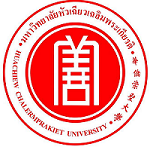Please use this identifier to cite or link to this item:
https://has.hcu.ac.th/jspui/handle/123456789/3401Full metadata record
| DC Field | Value | Language |
|---|---|---|
| dc.contributor.author | Nattanun Siricharoen | - |
| dc.contributor.author | ณัฐนันท์ ศิริเจริญ | - |
| dc.contributor.other | Huachiew Chalermprakiet University. Faculty of Communication Arts | en |
| dc.date.accessioned | 2024-12-26T14:31:05Z | - |
| dc.date.available | 2024-12-26T14:31:05Z | - |
| dc.date.issued | 2017 | - |
| dc.identifier.citation | วารสารมนุษยศาสตร์และสังคมศาสตร์ 8,2 (กรกฎาคม –ธันวาคม 2560 : 90-122. | en |
| dc.identifier.uri | https://has.hcu.ac.th/jspui/handle/123456789/3401 | - |
| dc.description | สามารถเข้าถึงบทความฉบับเต็ม (Full text) ได้ที่ : https://so02.tci-thaijo.org/index.php/human_ubu/article/view/214681/149447 | en |
| dc.description.abstract | This was a qualitative research with the objectives of 1) surveying the level of life happiness of the senior citizens who participated in the study; 2) surveying what happiness most senior citizens desire; and 3) finding specialized knowledge about the needs of senior citizens for health communication with family members in order to promote happiness. The informants consisted of 1) 30 senior citizens aged 60 or more; and 2) 5 experts on health communication, nursing, new media, and digital media/journalism. They were selected through purposive selection and snowball selection to obtain informants with similar characteristics for more complete data collection. The data collection tools were a questionnaire of demographic data questions, which the researcher asked the informants and recorded the answers herself, and a set of scaled questions to assess life satisfaction. Data were analyzed through a process of building conclusions that included analytic induction and typological analysis. The data were then reduced to find meanings and relationships. The results showed that the happiness level of the samples was balanced, with approximately half of the senior citizens primarily satisfied with their lives and approximately half primarily dissatisfied with their lives. Their needs focused on speaking regularly with their children and grandchildren. Their physical need was to be able to perform daily duties by themselves without being a burden. Their main emotional need was to talk to their family members often. Their socio-economic need was to have their children take them out for activities outside the home from time to time and help cover their monthly expenses. Health communication with elders should cover 1) physical needs such as food, rest, using the bathroom, suitable clothing, a safe environment and medical care; 2) emotional needs, such as love, attention, respect, understanding, empathy and forgiveness; and 3) social needs, such as meeting up with friends and joining in religious events. The topics that family members should communicate to their elders are 1. Current diseases; 2. Age-related diseases; 3. Methods of preventing diseases for which they are at risk; 4. Ask how they are feeling, either in person or on the phone; and 5. Health topics relevant to elderly people. Younger people should not neglect to engage in health communication with their aged parents or grandparents with understanding on a regular basis so that these needs will be met and they can live a happy life. | en |
| dc.description.abstract | การศึกษาครั้งนี้เป็นการวิจัยเชิงคุณภาพ มีวัตถุประสงค์ คือ 1) เพื่อสํารวจถึงระดับของความสุขในชีวิตของผู้สูงอายุที่เป็นผู้ให้ข้อมูลจากการศึกษาครั้งนี้ 2) เพื่อสํารวจความสุขที่ผู้สูงอายุส่วนใหญ่ต้องการ 3) เพื่อค้นหาองค์ความรู้เฉพาะเกี่ยวกับความต้องการของผู้สูงอายุสําหรับการสื่อสารสุขภาพกับสมาชิกในครอบครัวเพื่อช่วยให้เกิดความสุข กลุ่มผู้ให้ข้อมูล ได้แก่ 1) ผู้สูงอายุ ที่มีอายุตั้งแต่ 60 ปีขึ้นไป จํานวน 30 คน 2) ผู้เชี่ยวชาญเฉพาะด้านการสื่อสารสุขภาพกับผู้สูงอายุ นักวิชาการด้านพยาบาลศาสตร์ นักวิชาการด้านสื่อใหม่ สื่อดิจิทัลและสื่อมวลชน จํานวน 5 คน โดยใช้วิธีการคัดเลือกกลุ่มผู้ให้ข้อมูลและผู้เชี่ยวชาญจากวิธีการต่างๆ คือ จากวิธีการคัดเลือกแบบ Purposive Selection และ วิธีการคัดเลือกแบบ Snowball Selectionโดยใช้การแนะนําจากกลุ่มผู้ให้ข้อมูลกลุ่มนี้ไปยัง ผู้ให้ข้อมูลคนอื่นๆ ที่มีลักษณะใกล้เคียงกับตนเองและสามารถให้ข้อมูลได้อย่างครบถ้วน เครื่องมือที่ใช้ในการเก็บข้อมูล ได้แก่ แบบสอบถามด้านคุณลักษณะประชากรที่ผู้วิจัยกําหนดข้อคําถามไว้และลงบันทึกคําตอบจากผู้ให้ข้อมูลด้วยตนเอง แบบมาตราส่วนของการวัดความสุขในชีวิตใช้วิธีการวิเคราะห์ข้อมูลแบบสร้างข้อสรุป ด้วย การวิเคราะห์แบบอุปนัย (Analytic Induction) การวิเคราะห์โดยการจําแนกชนิดข้อมูล (Typological Analysis) หลังจากนั้นจึงทําการ Reduce เพื่อหาความหมายและการ มีความสัมพันธ์กันของข้อมูลจนกลายเป็นข้อสรุปของผลการวิจัย โดยพบว่าระดับความสุขของผู้สูงอายุจะมีทั้ง 2 ด้านที่เท่าๆ กัน คือ ทั้งมีความพึงพอใจและไม่พึงพอใจอย่างละใกล้เคียงกัน ส่วนใหญ่จะเน้นไปที่การได้พูดคุยกับลูกหลานเป็นประจํา โดยมีความต้องการทางด้านร่างกาย คือ อยากให้ตนเองแข็งแรงเพียงพอที่จะทํากิจวัตรประจําวันได้ด้วยตนเอง ไม่ต้องเป็นภาระของลูกหลานมากนัก มีความต้องการทางด้านจิตใจ คือ อยากให้ลูกหลานทักทายพูดคุยอย่างสมํ่าเสมอ อยากให้สอบถามสารทุกข์สุกดิบกับผู้สูงอายุเป็นประจํา มีความต้องการทางด้านสังคม – เศรษฐกิจ คือ อยากให้ลูกหลานช่วยพาไปร่วมกิจกรรม นอกบ้านบ้าง ช่วยรับผิดชอบค่าใช้จ่ายพื้นฐานรายเดือนให้ด้วย โดยวิธีการสื่อสารสุขภาพกับผู้สูงอายุนั้น ขอให้ครอบคลุมความต้องการ 3 ด้าน ได้แก่ 1) ด้านร่างกายได้แก่ อาหาร ขับถ่าย การพักผ่อน การมีที่อยู่อาศัยที่ปลอดภัย การมีเสื้อผ้าที่เหมาะสม การ รักษาพยาบาล2) ด้านจิตใจ ได้แก่ ความรัก การเอาใจใส่ การยอมรับนับถือ การเข้าใจ การเห็นอกเห็นใจและการให้อภัย 3) ด้านสังคม ได้แก่ การ เข้าร่วมกิจกรรมพบปะเพื่อน การร่วมกิจกรรมทางศาสนา โดยเนื้อหาที่ควรสื่อสารไปยังผู้สูงอายุ คือ 1.เรื่องโรคภัยไข้เจ็บที่กําลังเกิดขึ้น 2.ข้อมูลเกี่ยวกับโรคที่ผู้สูงอายุมักจะเป็นกัน3. ข้อมูลเกี่ยวกับวิธีการป้องกันโรคที่ผู้สูงอายุมีความเสี่ยงว่าจะเป็น 4.สอบถามถึงเรื่องสุขภาพเป็นประจําทั้งตอนพบหน้าหรือทางโทรศัพท์และ 5. ข้อมูลการดูแลสุขภาพที่สําคัญสําหรับผู้สูงอายุโดยเฉพาะ สิ่งเหล่านี้คือความต้องการของผู้สูงอายุ เพื่อจะได้มีความสุขในการใช้ชีวิตในแต่ละวันที่ลูกหลานไม่ควรละเลยที่จะปฏิบัติต่อผู้สูงอายุด้วยความเข้าใจ | en |
| dc.language.iso | en_US | en |
| dc.subject | Communication in medicine | en |
| dc.subject | การสื่อสารทางการแพทย์ | en |
| dc.subject | Older people | en |
| dc.subject | ผู้สูงอายุ | en |
| dc.subject | Older people -- Conduct of life | en |
| dc.subject | ผู้สูงอายุ -- การดำเนินชีวิต | en |
| dc.subject | Older people -- Family relationships | en |
| dc.subject | ผู้สูงอายุ -- ความสัมพันธ์ในครอบครัว | en |
| dc.subject | Quality of life | en |
| dc.subject | คุณภาพชีวิต | en |
| dc.subject | Happiness in old age | en |
| dc.subject | ความสุขในวัยสูงอายุ | en |
| dc.title | ความต้องการของผู้สูงอายุสำหรับการสื่อสารสุขภาพกับสมาชิกในครอบครัวเพื่อช่วยให้เกิดความสุข | en |
| dc.title.alternative | Senior Citizens’ Needs for Health Communication with Family Members to Increase Happiness | en |
| dc.type | Article | en |
| Appears in Collections: | Communication Arts - Articles Journals | |
Files in This Item:
| File | Description | Size | Format | |
|---|---|---|---|---|
| Senior-Citizens-needs-for-Health-Communication-with-Family-Members.pdf | 84.68 kB | Adobe PDF | View/Open |
Items in DSpace are protected by copyright, with all rights reserved, unless otherwise indicated.
